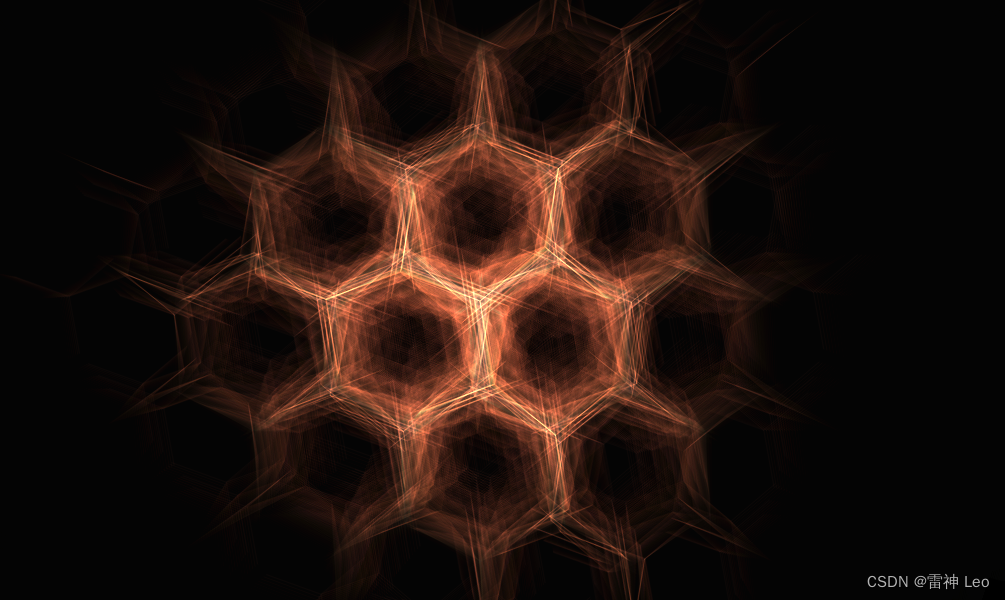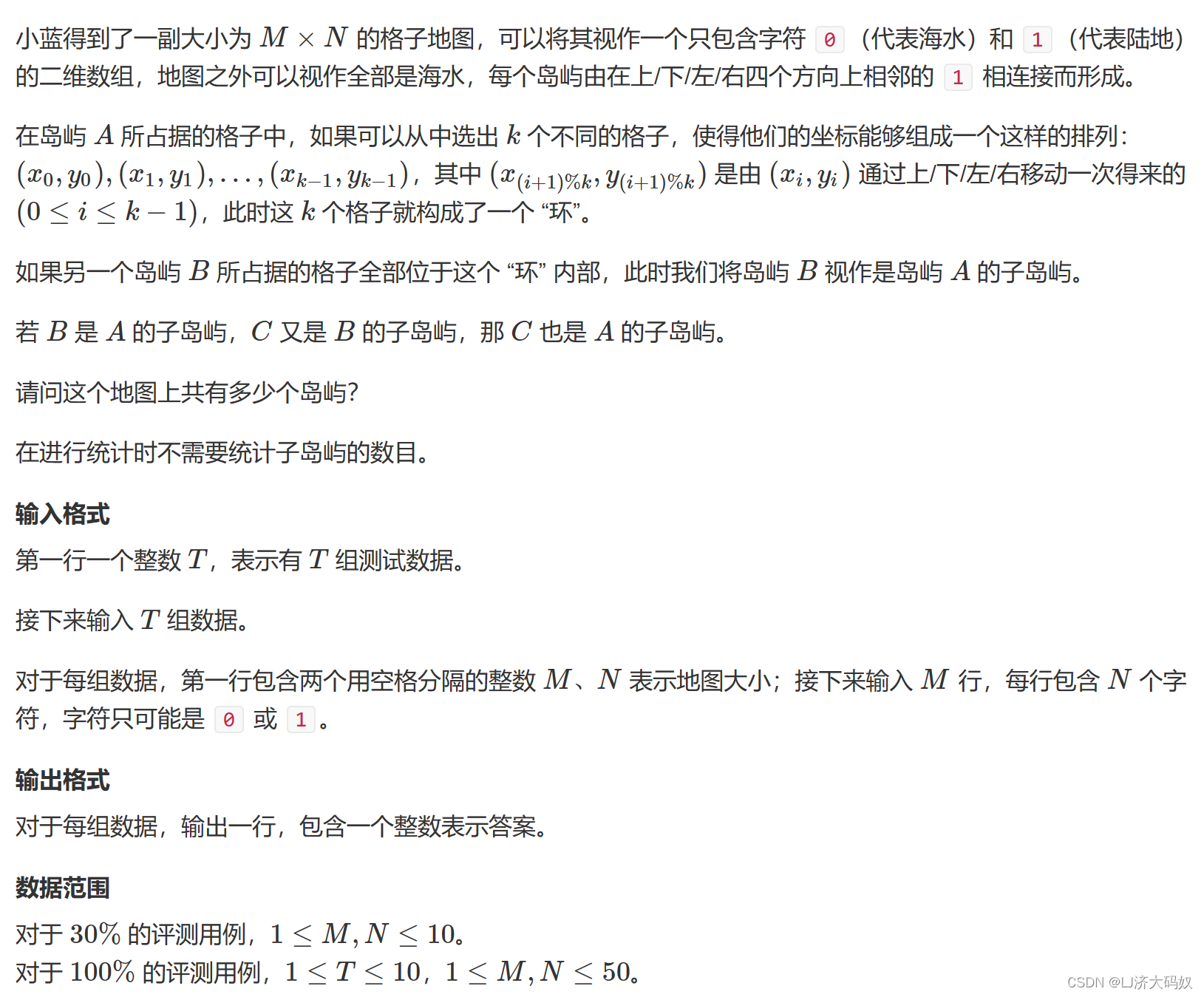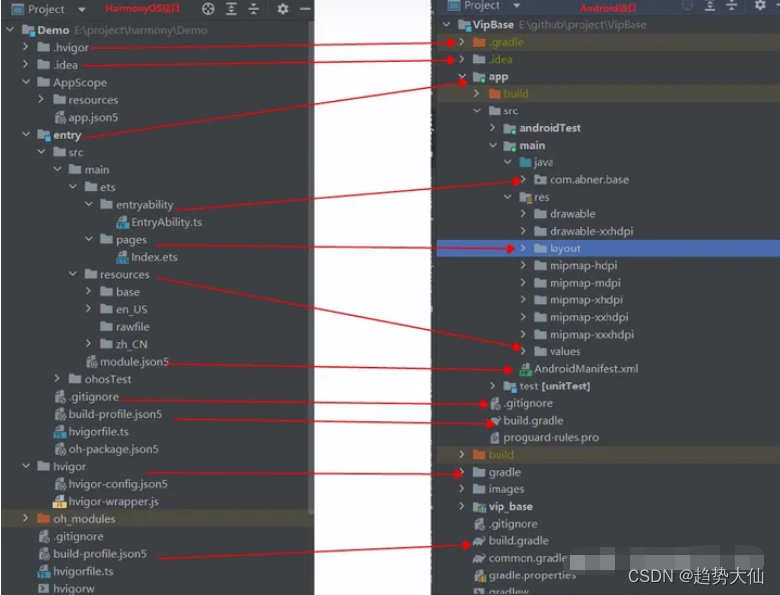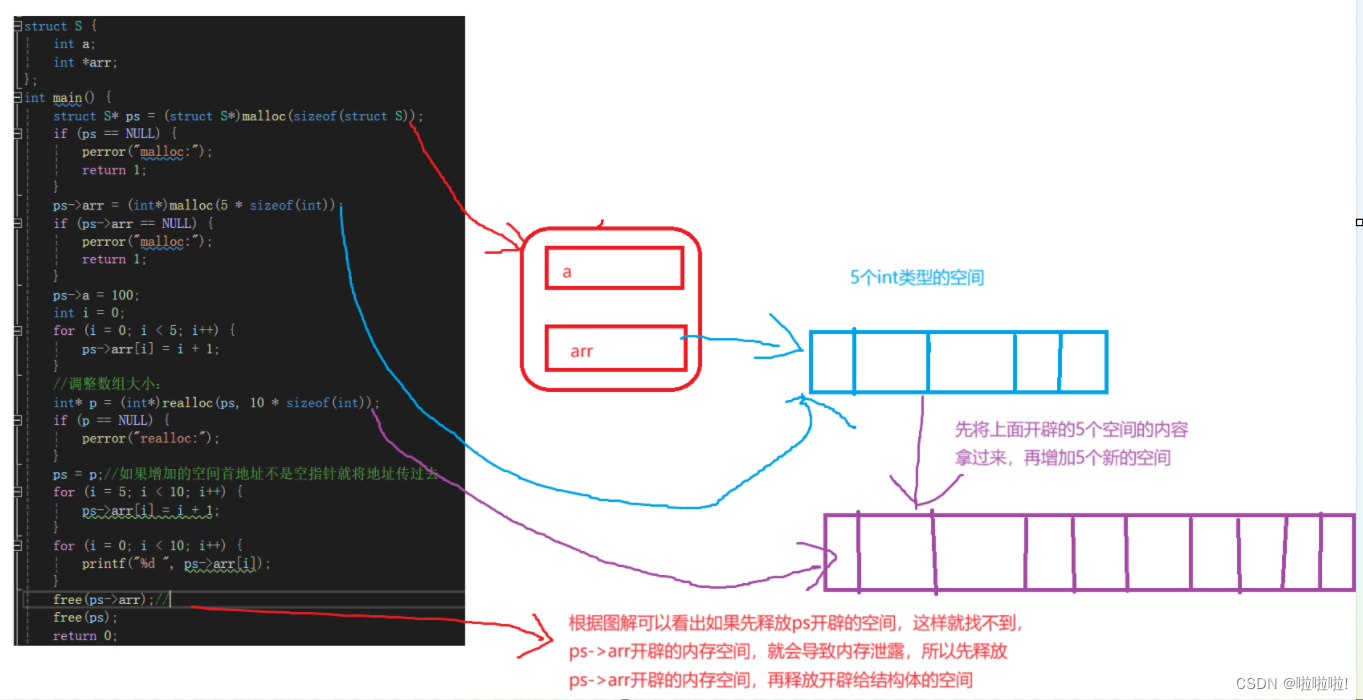文章目录
- STL容器之unordered_map类
- 1、unordered_map
- 1.1、unordered_map介绍
- 1.2、unordered_map的使用
- 1.2.1、unordered_map的常见构造
- 1.2.2、unordered_map的迭代器
- 1.2.3、unordered_map的容量
- 1.2.4、unordered_map的增删查
- 1.2.5、unordered_map的桶操作
- 2、unordered_multimap
- 3、unordered_map的底层结构
- 4、unordered_set的模拟实现
- 4.1、改造哈希表(链表法)
- 4.2、MyUnordered_Map类的构成

STL容器之unordered_map类
1、unordered_map
1.1、unordered_map介绍
unordered_map的文档介绍
unordered_map是以不特定顺序存储独特元素的容器,并允许根据其值快速检索单个元素。
在unordered_map中,键值通常用于唯一标识元素,而映射值是具有与此键关联内容的对象(pair<K,V>)。键是不可变的。键和映射值的类型可能不同。
在内部,unordered_map中的元素没有按任何特定顺序排序,而是根据其哈希值组织成桶,以便通过其值直接快速访问单个元素(平均时间复杂度恒定)。
unordered_map容器比map容器更快地通过其键访问单个元素,但是它通常在遍历元素子集的范围迭代方面效率较低。
unordered_map实现了直接访问运算符(运算符[]),它允许使用其键值作为参数直接访问映射值。
容器中的迭代器至少是前向iterators。
1.2、unordered_map的使用
1.2.1、unordered_map的常见构造
(constructor )函数名称 接口说明 unordered_map ( size_type n = /* see below */, const hasher& hf = hasher(), const key_equal& eql = key_equal(), const allocator_type& alloc = allocator_type() ) 构造空的unordered_map unordered_map ( InputIterator first, InputIterator last, size_type n = /* see below */, const hasher& hf = hasher(), const key_equal& eql = key_equal(), const allocator_type& alloc = allocator_type() ) 用[first,last)迭代区间构造unordered_map unordered_map ( const unordered_map& ump ) unordered_map的拷贝构造 void test_um1() { unordered_map<int, int> um; int a[]{1, 2, 5, 7, 2, 3, 5, 8, 2, 11, 9}; for (auto e: a) { um.insert(make_pair(e, e)); } for (auto e: um) { cout << e.first << ":" << e.second << endl; } cout << "=======================" << endl; unordered_map<int, int> um1(um.begin(), um.end()); for (auto e: um1) { cout << e.first << ":" << e.second << endl; } cout << "=======================" << endl; unordered_map<int, int> um2(um1); for (auto e: um2) { cout << e.first << ":" << e.second << endl; } }
1.2.2、unordered_map的迭代器
函数名称 接口说明 begin()+end() 获取第一个元素位置的iterator和获取最后一个元素的后一个位置的iterator cbegin()+cend() 获取第一个元素位置的const_iterator和获取最后一个元素的后一个位置的const_iterator void test_um2() { unordered_map<int, int> um; int a[]{1, 2, 5, 7, 2, 3, 5, 8, 2, 11, 9}; for (auto e: a) { um.insert(make_pair(e, e)); } unordered_map<int, int>::iterator it = um.begin(); while (it != um.end()) { cout << it->first << ":" << it->second << endl; ++it; } cout << "=======================" << endl; unordered_map<int, int>::const_iterator cit = um.cbegin(); while (cit != um.cend()) { cout << cit->first << ":" << cit->second << endl; ++cit; } }
1.2.3、unordered_map的容量
函数名称 接口说明 empty 判断当前unordered_map是否为空 size 获取unordered_map的元素个数 void test_um3() { unordered_map<int, int> um; int a[]{1, 2, 5, 7, 2, 3, 5, 8, 2, 11, 9}; for (auto e: a) { um.insert(make_pair(e, e)); } cout << um.empty() << endl; cout << um.size() << endl; um.clear(); cout << um.empty() << endl; cout << um.size() << endl; }
1.2.4、unordered_map的增删查
函数名称 接口说明 insert 在unordered_map中插入pair<key,value>键值对,如果插入成功,返回<key插入位置,true>,插入失败说明unordered_map中已经有key,返回<key在unordered_map的位置,false> erase 删除unordered_map中pos位置的元素,或者删除值为val的元素 swap 交换两个unordered_map的元素 clear 将unordered_map的元素置空 find 返回unordered_map中值为x的元素位置 count 返回unordered_map中值为x的元素个数 operator[] 访问key元素的映射值value,如果key不存在,则插入pair<key,V()>并返回V();如果key存在,则返回对应的value void test_um4() { unordered_map<int, int> um; int a[]{1, 2, 5, 7, 2, 3, 5, 8, 2, 11, 9}; for (auto e: a) { um.insert(make_pair(e, e)); } for (auto e: um) { cout << e.first << ":" << e.second << endl; } cout << "========================" << endl; um.erase(1); um.erase(2); auto pos = um.find(11); um.erase(pos); for (auto e: um) { cout << e.first << ":" << e.second << endl; } cout << "========================" << endl; unordered_map<int, int> um1; um1.insert(make_pair(100, 100)); um1.swap(um); cout << "um:"; for (auto e: um) { cout << e.first << ":" << e.second << endl; } cout << "um1:"; for (auto e: um1) { cout << e.first << ":" << e.second << endl; } cout << "========================" << endl; cout << um1.count(5) << endl; cout << um1.count(1) << endl; cout << "========================" << endl; um1.clear(); cout << "um:"; for (auto e: um) { cout << e.first << ":" << e.second << endl; } cout << "um1:"; for (auto e: um1) { cout << e.first << ":" << e.second << endl; } }
1.2.5、unordered_map的桶操作
函数名称 接口说明 bucket_count 返回unordered_map中的桶的个数 bucket_size 返回第n个桶中元素的个数 bucket 返回元素k在哪个桶 void test_um5() { unordered_map<int, int> um; int a[]{1, 2, 5, 7, 2, 3, 5, 8, 2, 11, 9}; for (auto e: a) { um.insert(make_pair(e, e)); } cout << um.bucket_count() << endl; cout << um.bucket_size(1) << endl; cout << um.bucket(11) << endl; }
2、unordered_multimap
这个其实就和map和multimap一样,就是比unordered_map多了一个可以存重复值的特性。
演示一下:
void test_umm1() { unordered_multimap<int, int> ummp; int a[]{1, 2, 5, 7, 2, 3, 5, 8, 2, 11, 9}; for (auto e: a) { ummp.insert(make_pair(e, e)); } for (auto e: ummp) { cout << e.first << ":" << e.second << endl; } cout << endl; }
3、unordered_map的底层结构
unordered系列的关联式容器之所以效率比较高,是因为其底层使用了哈希结构。
unordered_map和unordered_set一样,底层都是用的哈希表,都是用的链表法。
想了解底层结构可以看STL容器之unordered_set类这篇文章
4、unordered_set的模拟实现
以下我们自己模拟实现的时候,unordered_set的模拟实现我们使用MyUnordered_Set类用于区分,unordered_map的模拟实现我们使用MyUnordered_Map类用于区分。
4.1、改造哈希表(链表法)
结点的结构体需要修改一下,之前我们存的是
pair<K,V>,但MyUnordered_Set是存K的,因此我们模版参数设置为一个参数T,MyUnordered_Set调用就是K,MyUnordered_Map调用就是pair<K,V>。template<class T> struct HashNode { typedef HashNode<T> Node; Node *_next; T _data; HashNode(const T &data) : _data(data), _next(nullptr) {} };哈希表需要增加一个模版参数:取Key的仿函数,因为
MyUnordered_Set插入的是K,但是MyUnordered_Map插入的是pair<K,V>,我们需要从pair<K,V>中取出K。因此插入也要改成bool Insert(const T &data){}。这个仿函数分别放在
MyUnordered_Set和MyUnordered_Map的类中,用来传给哈希表。
MyUnordered_Set类中:struct MapKeyOfT { K operator()(const pair<K, V> &kv) { return kv.first; } };
MyUnordered_Map类中:struct MapKeyOfT { K operator()(const pair<K, V> &kv) { return kv.first; } };因此当前改造后的哈希表为:
template<class T> struct HashNode { typedef HashNode<T> Node; Node *_next; T _data; HashNode(const T &data) : _data(data), _next(nullptr) {} }; template<class K> struct HashFunc { size_t operator()(const K &key) { return (size_t) key; } }; template<> struct HashFunc<string> { size_t operator()(const string &str) { size_t hash = 0; for (auto e: str) { hash += e; e *= 131; } return hash; } }; template<class K, class T, class KeyOfT, class Hash> class HashTable { typedef HashNode<T> Node; public: ~HashTable() { for (int i = 0; i < _tables.size(); ++i) { _tables[i] = nullptr; } } HashTable(size_t size = 10) { _tables.resize(size, nullptr);// 各结点初始化为空 } Node* Find(const K &key) { Hash hs; KeyOfT kot; // 先算出映射到哪里 int hashi = hs(key) % _tables.size(); Node *cur = _tables[hashi]; while (cur) { if (kot(cur->_data) == key) { return cur; } cur = cur->_next; } return nullptr; // 没找到 } bool Erase(const K &key) { Hash hs; KeyOfT kot; iterator ret = Find(key); if (ret != end()) { int hashi = hs(key) % _tables.size(); Node *cur = _tables[hashi]; Node *prev = nullptr; while (cur) { if (kot(cur->_data) == key) { if (prev == nullptr) _tables[hashi] = cur->_next; // 要删除的就是表中的结点,那么将它的下一个结点放到表中 else prev->_next = cur->_next; // 要删除的是表中的结点的后继中的某个 delete cur; // 删除该结点并退出循环 break; } prev = cur; cur = cur->_next; } --_n; return true; } else { return false; } } bool Insert(const T &data) { Hash hs; KeyOfT kot; if (Find(kot(data))) return false;// 找到了 if (_n == _tables.size()) { // 扩容 vector<Node *> newTables; newTables.resize(2 * _tables.size(), nullptr); for (int i = 0; i < _tables.size(); ++i) { Node *cur = _tables[i]; while (cur) { Node *next = cur->_next; //记录下一个结点位置,防止找不到下一个结点 // 映射到新表位置 int hashi = hs(kot(cur->_data)) % newTables.size(); // 插入到新表位置 Node *newcur = newTables[hashi]; if (newcur) { // 当前表中的结点不为空,则头插并链接 cur->_next = newcur; newTables[hashi] = cur; } else { // 当前表中的结点为空,则新结点直接放到这个表中 newTables[hashi] = cur; cur->_next = nullptr;// 新插入的cur的_next不一定是空 } cur = next;// 继续往下找 } } _tables.swap(newTables); } // 先算出映射到哪里 int hashi = hs(kot(data)) % _tables.size(); Node *cur = _tables[hashi]; Node *newnode = new Node(data); if (cur) { // 当前表中的结点不为空,则头插并链接 newnode->_next = cur; _tables[hashi] = newnode; } else { // 当前表中的结点为空,则新结点直接放到这个表中 _tables[hashi] = newnode; } ++_n; return true; } private: vector<Node *> _tables; size_t _n = 0; };还需要增加迭代器,用来遍历哈希表。
// 前置声明 template<class K, class T, class KeyOfT, class Hash> class HashTable; template<class K, class T, class KeyOfT, class Hash> struct __HTIterator { typedef HashNode<T> Node; typedef HashTable<K, T, KeyOfT, Hash> HT; typedef __HTIterator<K, T, KeyOfT, Hash> Self; Node *_node; HT *_ht; __HTIterator(Node *node, HT *ht) : _node(node), _ht(ht) {} T &operator*() { return _node->_data; } T *operator->() { return &_node->_data; } Self &operator++() { if (_node->_next) { // 当前结点还有后继结点 _node = _node->_next; } else { // 当前桶走完了 KeyOfT kot; Hash hs; // 先算出当前在哪个哈希桶 int hashi = hs(kot(_node->_data)) % _ht->_tables.size(); ++hashi;// 走到下一个桶 while (hashi < _ht->_tables.size()) { if (_ht->_tables[hashi]) { // 这个桶有结点 _node = _ht->_tables[hashi]; break; } else ++hashi;// 这个桶没有有结点 } if (hashi == _ht->_tables.size()) { // 走到最后了,没找到下一个位置 _node = nullptr; } } return *this; } bool operator!=(const Self &s) { return s._node != _node; } };改造后的哈希表(终极版):这里的插入的返回值由
bool变为了pair<iterator,bool>,和官方保持一致。template<class T> struct HashNode { typedef HashNode<T> Node; Node *_next; T _data; HashNode(const T &data) : _data(data), _next(nullptr) {} }; template<class K> struct HashFunc { size_t operator()(const K &key) { return (size_t) key; } }; template<> struct HashFunc<string> { size_t operator()(const string &str) { size_t hash = 0; for (auto e: str) { hash += e; e *= 131; } return hash; } }; // 前置声明 template<class K, class T, class KeyOfT, class Hash> class HashTable; template<class K, class T, class KeyOfT, class Hash> struct __HTIterator { typedef HashNode<T> Node; typedef HashTable<K, T, KeyOfT, Hash> HT; typedef __HTIterator<K, T, KeyOfT, Hash> Self; Node *_node; HT *_ht; __HTIterator(Node *node, HT *ht) : _node(node), _ht(ht) {} T &operator*() { return _node->_data; } T *operator->() { return &_node->_data; } Self &operator++() { if (_node->_next) { // 当前结点还有后继结点 _node = _node->_next; } else { // 当前桶走完了 KeyOfT kot; Hash hs; // 先算出当前在哪个哈希桶 int hashi = hs(kot(_node->_data)) % _ht->_tables.size(); ++hashi;// 走到下一个桶 while (hashi < _ht->_tables.size()) { if (_ht->_tables[hashi]) { // 这个桶有结点 _node = _ht->_tables[hashi]; break; } else ++hashi;// 这个桶没有有结点 } if (hashi == _ht->_tables.size()) { // 走到最后了,没找到下一个位置 _node = nullptr; } } return *this; } bool operator!=(const Self &s) { return s._node != _node; } }; template<class K, class T, class KeyOfT, class Hash> class HashTable { friend __HTIterator<K, T, KeyOfT, Hash>;// 为了能访问_tables typedef HashNode<T> Node; public: typedef __HTIterator<K, T, KeyOfT, Hash> iterator; iterator begin() { for (int i = 0; i < _tables.size(); ++i) { if (_tables[i]) return iterator(_tables[i], this);// 从左找到第一个哈希桶的第一个结点 } return end(); } iterator end() { return iterator(nullptr, this); } ~HashTable() { for (int i = 0; i < _tables.size(); ++i) { _tables[i] = nullptr; } } HashTable(size_t size = 10) { _tables.resize(size, nullptr);// 各结点初始化为空 } iterator Find(const K &key) { Hash hs; KeyOfT kot; // 先算出映射到哪里 int hashi = hs(key) % _tables.size(); Node *cur = _tables[hashi]; while (cur) { if (kot(cur->_data) == key) { return iterator(cur, this); } cur = cur->_next; } return iterator(nullptr, this); // 没找到 } bool Erase(const K &key) { Hash hs; KeyOfT kot; iterator ret = Find(key); if (ret != end()) { int hashi = hs(key) % _tables.size(); Node *cur = _tables[hashi]; Node *prev = nullptr; while (cur) { if (kot(cur->_data) == key) { if (prev == nullptr) _tables[hashi] = cur->_next; // 要删除的就是表中的结点,那么将它的下一个结点放到表中 else prev->_next = cur->_next; // 要删除的是表中的结点的后继中的某个 delete cur; // 删除该结点并退出循环 break; } prev = cur; cur = cur->_next; } --_n; return true; } else { return false; } } pair<iterator, bool> Insert(const T &data) { Hash hs; KeyOfT kot; iterator it = Find(kot(data)); if (it != end()) return make_pair(it, false);// 找到了 if (_n == _tables.size()) { // 扩容 vector<Node *> newTables; newTables.resize(2 * _tables.size(), nullptr); for (int i = 0; i < _tables.size(); ++i) { Node *cur = _tables[i]; while (cur) { Node *next = cur->_next; //记录下一个结点位置,防止找不到下一个结点 // 映射到新表位置 int hashi = hs(kot(cur->_data)) % newTables.size(); // 插入到新表位置 Node *newcur = newTables[hashi]; if (newcur) { // 当前表中的结点不为空,则头插并链接 cur->_next = newcur; newTables[hashi] = cur; } else { // 当前表中的结点为空,则新结点直接放到这个表中 newTables[hashi] = cur; cur->_next = nullptr;// 新插入的cur的_next不一定是空 } cur = next;// 继续往下找 } } _tables.swap(newTables); } // 先算出映射到哪里 int hashi = hs(kot(data)) % _tables.size(); Node *cur = _tables[hashi]; Node *newnode = new Node(data); if (cur) { // 当前表中的结点不为空,则头插并链接 newnode->_next = cur; _tables[hashi] = newnode; } else { // 当前表中的结点为空,则新结点直接放到这个表中 _tables[hashi] = newnode; } ++_n; return make_pair(iterator(_tables[hashi], this), true); } private: vector<Node *> _tables; size_t _n = 0; };
4.2、MyUnordered_Map类的构成
其实就是套了一层哈希表,多了一个MapKeyOfT用来传给哈希表的模版参数。
#include "HashTable_Bucket.h" template<class K, class V, class Hash = HashFunc<K>> class MyUnordered_Map { struct MapKeyOfT { K operator()(const pair<K, V> &kv) { return kv.first; } }; public: typedef typename HashTable<K, pair<const K, V>, MapKeyOfT, Hash>::iterator iterator; iterator begin() { return _hs.begin(); } iterator end() { return _hs.end(); } pair<iterator, bool> insert(const pair<K, V> &kv) { return _hs.Insert(kv); } bool erase(const K &key) { return _hs.Erase(key); } iterator find(const K &key) { return _hs.Find(key); } V &operator[](const K &key) { pair<iterator, bool> ret = insert(make_pair(key, V())); return ret.first->second; } private: HashTable<K, pair<const K, V>, MapKeyOfT, Hash> _hs; };
OKOK,C++ STL容器之unordered_map类就到这里。如果你对Linux和C++也感兴趣的话,可以看看我的主页哦。下面是我的github主页,里面记录了我的学习代码和leetcode的一些题的题解,有兴趣的可以看看。
Xpccccc的github主页




















